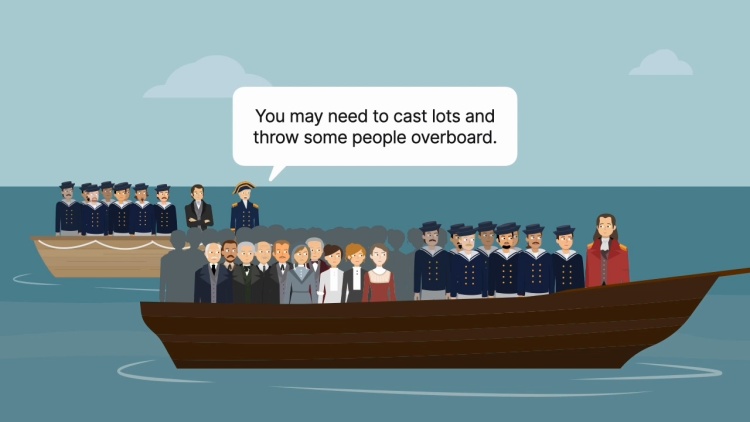United States v. Holmes
United States District Court for the Eastern District of Pennsylvania
26 F. Cas. 360 (1842)

- Written by Carolyn Strutton, JD
Facts
The passenger ship William Brown left Liverpool for Philadelphia in 1841, with 17 crew members and 65 passengers. Approximately 250 miles from Newfoundland she struck an iceberg. The captain, eight other crew members, and one passenger got into the ship’s jolly boat, and the first mate, all other remaining crew members, and 32 passengers got into the ship’s long boat. The remaining 31 souls, all passengers, perished when the ship quickly sunk. The next morning the captain instructed the crew members in the long boat to obey the first mate as the jolly boat and the long boat began to drift apart. The long boat was already leaking and was overloaded. Some discussion passed between the captain and the first mate that the long boat was unlikely to stay afloat for long given its condition, and that it might be necessary to cast lots and throw some of the people in the long boat overboard to lighten its load. As the weather worsened the long boat continued to leak and began to founder. That night the conditions in the boat became apparently desperate, and the first mate said to the crew “Men, you must go to work, or we shall all perish.” The crew began throwing passengers out of the boat, eventually throwing out 16 passengers to their deaths. One passenger, Francis Askin, begged to be allowed to remain in the boat until morning when lots could be drawn, but crewman Holmes refused and threw him out. The next morning the boat was spotted by another ship and all of those remaining in the boat were rescued. Holmes was charged with manslaughter on the high seas for the death of Askin. At trial, the captain testified that Holmes was a model, obedient seaman who closely followed orders, and that he had acted valiantly to save passengers from the sinking ship.
Rule of Law
Issue
Holding and Reasoning (Baldwin, J.)
What to do next…
Here's why 899,000 law students have relied on our case briefs:
- Written by law professors and practitioners, not other law students. 47,000 briefs, keyed to 994 casebooks. Top-notch customer support.
- The right amount of information, includes the facts, issues, rule of law, holding and reasoning, and any concurrences and dissents.
- Access in your classes, works on your mobile and tablet. Massive library of related video lessons and high quality multiple-choice questions.
- Easy to use, uniform format for every case brief. Written in plain English, not in legalese. Our briefs summarize and simplify; they don’t just repeat the court’s language.





